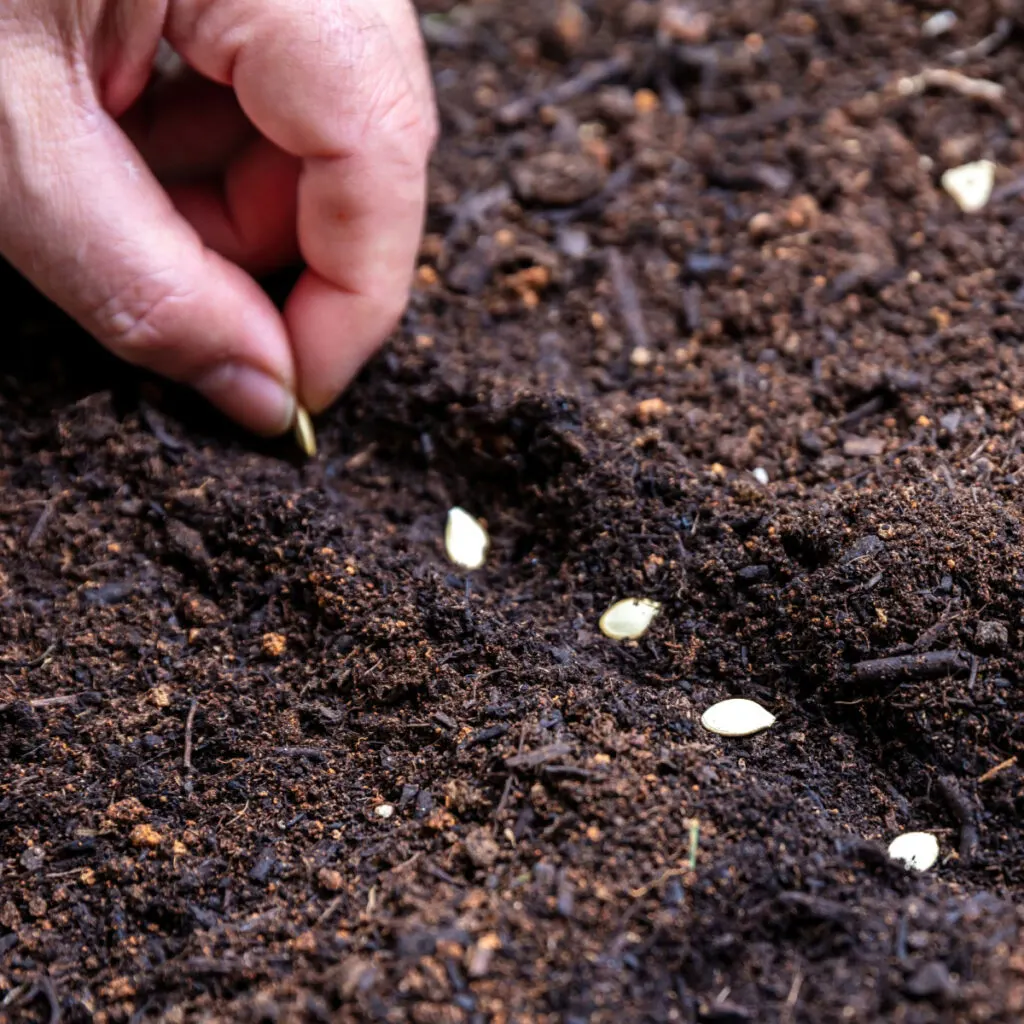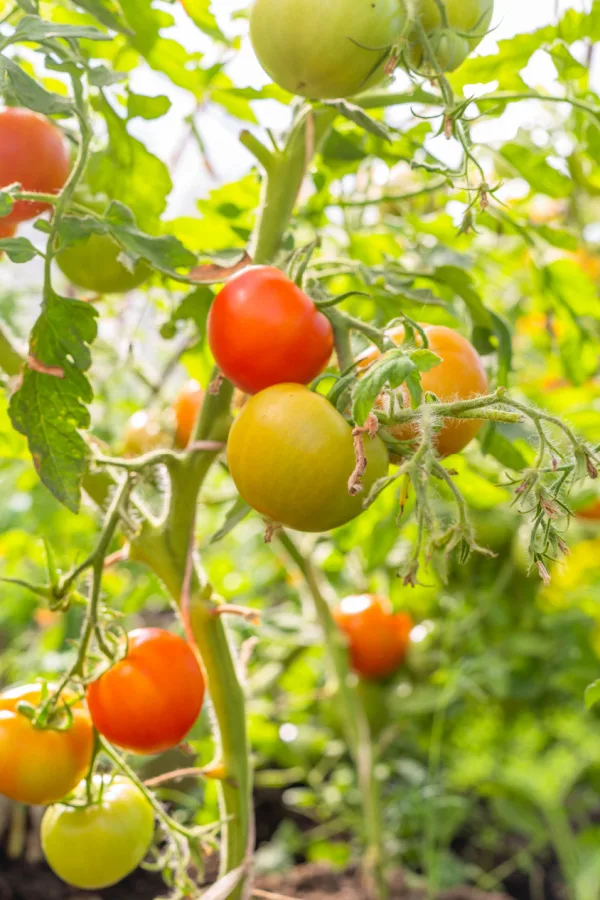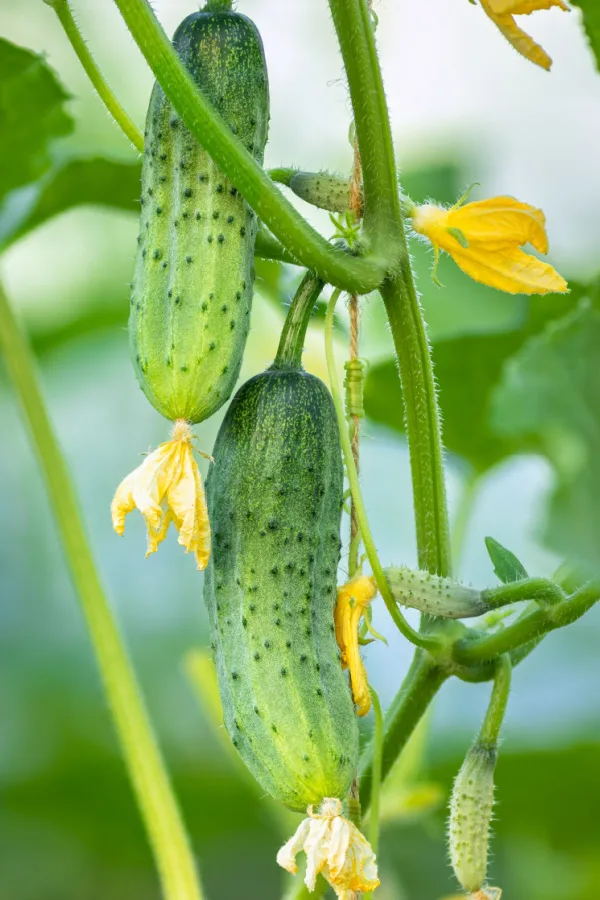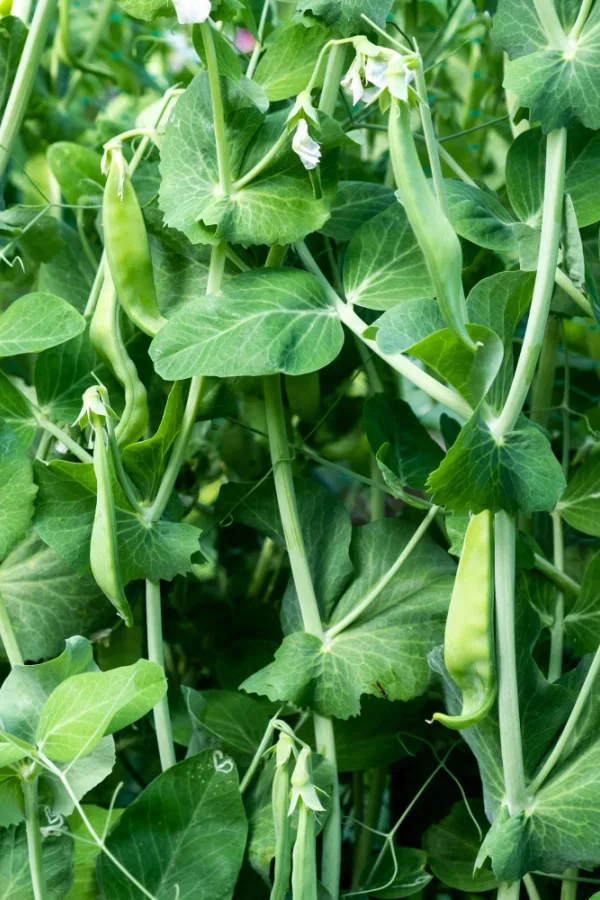When you plant a garden during the summer, you can extend your harvest long into the cooler fall months. Not only is it easy to start new plants during this time, but it is also inexpensive and way more successful than you might think!
There is so much focus and emphasis on getting seeds and gardens ready for spring sowing. By the time those plants are growing strong, many people either forget or are unaware of the fact that they can start new plants from seeds right in the heat of summer.
During the summer months, there is no longer a threat of frost or freezes killing young plants. In addition, the amount of daylight is longer, giving plants much more time in the bright sunlight.

Add to that the fact that the soil is already at the ideal temperature for quick seed germination and you have a perfect setup for success! And don’t forget that many pests and diseases that plague garden vegetables early in the growing season are long gone by the time mid-summer hits.
When you combine all of those great growing conditions with the fact that you can easily start new plants from seeds, it makes having a summer garden a no-brainer. However, there are a few things to keep in mind before you start planting every type of seed you own.
Why Plant In The Summer?
By about mid-summer, your spring-planted crops are likely starting to slow down their production drastically. Most of them start producing fruit and vegetables with such intensity early on that they start to fizzle out as the weeks go by.
Or, maybe your vegetable garden has been attached by spring pests, powdery mildew, or other devastating diseases. Those plants might very well be on their way out by the end of July. That doesn’t give you a lot of time to harvest and process all that hard work.
There are also those early spring crops like peas and lettuces that prefer growing in the cooler weather. Most of those have either bolted or dried up altogether due to the warm temperatures and harsh sun. Since they grow so quickly from seeds though, they can easily be replanted and ready for harvesting when the cooler fall temperatures hit.

In fact, many different vegetable crops have such short growing seasons that they are perfect for replanting. When you decide to sow these seed crops in the middle of summer, you are setting yourself up for a big fall harvest!
Planting A Garden In The Summer
Preparing The Soil
Before you attempt to plant a seed in the ground, you need to remember that the soil is likely depleted of some energy. All of those spring crops used up a lot of energy and resources in order to grow and produce. So a little soil recharge is a must.
The best way of doing this is to mix a few inches of aged compost into the soil as you plant the seeds. Not only will this help to boost the nutrients and energy of the soil, but it will also work in a lot of great organic matter as well.
Sow your seeds the same way that you would during the spring months. Consider mature plant spacing as well as the shade from already-mature plants growing currently in your garden space. You don’t want a huge indeterminate tomato plant to shade out all those new seedlings.
Water the seeds well and keep the soil evenly moist to help promote germination. The soil will likely dry out faster with the hot sun in the middle of summer, so water often. Continue to water young seedlings frequently until they become established.
Choosing The Right Seeds – Planting A Garden In The Summer
Besides preparing your soil and planning out the growing location, you need to choose the right variety of seeds. Not all plants will have enough time to grow to maturity to produce fruit or vegetables before fall frosts arrive.

For example, tomatoes and pepper plants can take around 90 days before they start to put on fruit. When you sow the seeds in late July or early August, they might not be able to reach maturity in enough time.
Thankfully, there are several vegetable varieties that have shorter growing periods and are perfect for starting mid-summer.
Green Beans
Most spring-planted green bean crops are about done producing by mid-July. You are usually able to get one large harvest early on and then a few smaller ones here and there. But they are typically spent by the middle of summer.
The good news is that they only take around 60 days before producing beans. This means that you can have a second large garden harvest in the early fall when you replant seeds in the summer. This is great news for canning and putting away beans for the winter months.
Another advantage of planting beans in the summer is that they actually help to add nutrients to the soil they are growing in. That will give you a head start for whatever crop you decide to grow in that area next year.
Cucumbers
Cucumbers are one of the easiest and best crops to plant in your garden in the middle of the summer. Not only do they germinate quickly in warm soil but they are heavy fall producers as well.

Some varieties, like Boston Pickling Cucumbers, will start producing in as little as 55 days after germination. Whether it’s eating fresh in salads or slicing for pickles and relishes, cucumbers are a perfect crop to plant in the summer. (Affiliate Link: Boston Pickling Cucumber Seeds)
Another bonus with starting cucumbers in the summer is that the threat of cucumber beetles and powdery mildew is almost completely gone. You can have peace of mind that your plants will be healthier with a second planting.
Zucchini
While zucchini plants are fast and prolific producers, they often start to struggle by mid-summer. Whether it’s a lack of moisture, the summer heat, or just the age of the plant, they often start to fail by the middle of July.
Instead of trying to troubleshoot and figure out what might be the issue, it’s often better to just cut your losses and replant. Like cucumbers, zucchini will quickly germinate in the warm soil and begin producing by late summer and early fall.
Peas
Even though peas love cooler temperatures, the summer is the best time to sow the seeds and get them started on growing. When you plant them in July and August, they mature just as their preferred cooler fall temperatures arrive. And just like green beans, peas are another crop that can help improve the soil as it grows.

Early Spring Crops – Plant A Garden In The Summer
Crops that prefer cooler weather are another great option for planting in the summer. Lettuces, kale, spinach, and radishes all grow easily from seed and mature in just a few weeks. In fact, some of the flavors of these crops improve as the weather cools down.
These crops are also perfect for succession planting. Starting in mid-summer, plant a row or two of these crops. Wait a couple of weeks and sow another row or two. This will keep you in a constant supply of fresh produce long into the fall months. (See “Succession Planting – How To Get The Most From Your Garden Space”
With these simple tips in mind, you can easily enjoy growing and harvesting fresh garden produce long into the fall months by planting in the summer!
Follow Our Facebook Page For Even More Great Tips! Simple Garden Life Facebook Page
Simple Garden Life is a website dedicated to keeping gardening fun, simple and enjoyable! We publish two new articles each week along with a new garden podcast episode every two weeks. This article may contain affiliate links.
